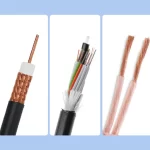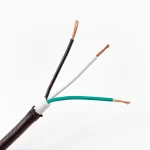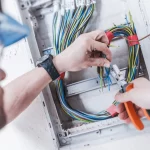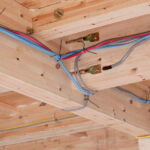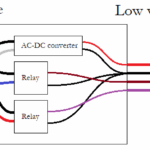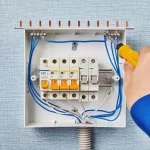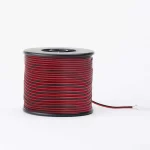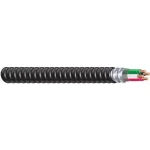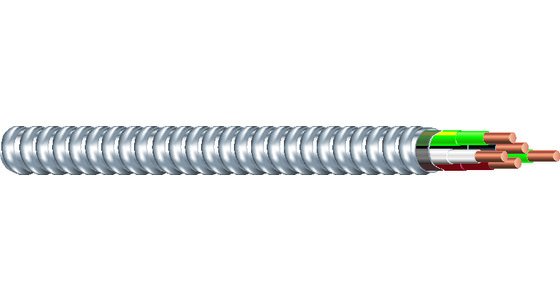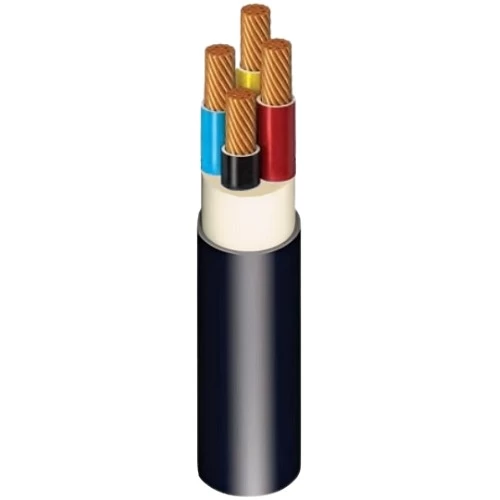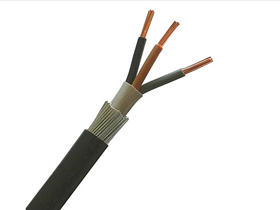When you need to run electrical wiring underground, direct burial MC cable offers a reliable, code-compliant solution that eliminates the need for conduit in many applications. This specialized metal-clad cable is engineered specifically for direct underground installation.
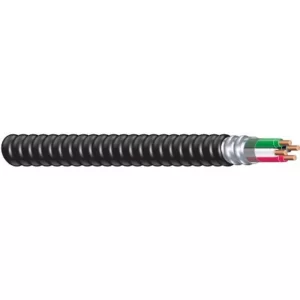
direct burial mc cable
What is Direct Burial MC Cable?
Direct burial MC cable is a type of metal-clad (MC) cable with enhanced protective features that allow it to be installed directly in the ground without additional conduit protection. The cable features:
- Moisture-resistant jacket: Protects against water infiltration
- Corrosion-resistant armor: Typically aluminum or galvanized steel
- Sunlight-resistant outer sheath: Prevents UV degradation
- Enhanced grounding: Continuous metallic armor provides equipment grounding
Key Applications
Residential Uses:
- Outdoor lighting circuits
- Pool and spa electrical connections
- Detached garage power feeds
- Landscape lighting systems
- Security system wiring
Commercial Applications:
- Parking lot lighting
- Sign lighting circuits
- Building-to-building connections
- Outdoor equipment power
Installation Requirements
Burial Depth
- Standard circuits: Minimum 18 inches deep
- GFCI-protected circuits: May allow shallower burial (check local codes)
- Under driveways: 24 inches minimum depth required
Protection Measures
- Install warning tape 12 inches above the cable
- Use sand bedding where soil conditions are rocky
- Avoid sharp bends that could damage the armor
- Maintain proper clearances from other utilities
Advantages Over Traditional Methods
No Conduit Required: Saves installation time and material costs compared to running individual wires through underground conduit.
Faster Installation: Single cable pull versus multiple wire pulls through conduit.
Code Compliance: Meets NEC requirements for direct burial when properly installed.
Durability: Metal armor provides superior protection against physical damage.
Choosing the Right Direct Burial MC Cable
Wire Gauge Selection
- 12 AWG: 20-amp circuits (most outdoor lighting)
- 10 AWG: 30-amp circuits (large equipment)
- 8 AWG and larger: Heavy-duty applications
Conductor Count
- 12-2: Standard branch circuits
- 12-3: Three-way switching applications
- Multiple conductors: Multi-circuit installations
Common Installation Mistakes to Avoid
- Insufficient burial depth: Always verify local code requirements
- Sharp bends: Use proper bending radius to prevent armor damage
- No marking tape: Required for future excavation safety
- Improper terminations: Use appropriate fittings for wet locations
Cost Considerations
While direct burial MC cable costs more upfront than standard wire, it often provides overall savings by eliminating:
- Conduit material costs
- Conduit installation labor
- Multiple wire pulls
- Reduced trenching time
Code Compliance and Safety
Direct burial MC cable must be listed for direct burial use and installed according to NEC Article 330. Key requirements include:
- Proper grounding and bonding
- Appropriate overcurrent protection
- Suitable termination methods
- Compliance with local amendments
Conclusion
Direct burial MC cable provides an efficient, code-compliant solution for underground electrical installations. When properly selected and installed, it offers long-term reliability while reducing installation complexity. Always consult local electrical codes and consider hiring a qualified electrician for installation to ensure safety and compliance.
For your next underground electrical project, direct burial MC cable might be the ideal solution to get power where you need it safely and efficiently.

